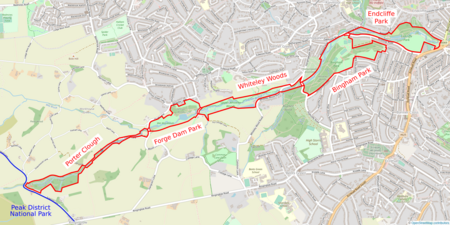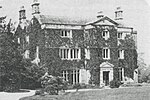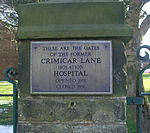Porter Valley Parks
Forests and woodlands of South YorkshireGrade II listed parks and gardens in South YorkshireLocal Nature Reserves in South YorkshireParks in SheffieldPorter Brook ... and 1 more
Use British English from January 2020

The Porter Valley Parks are a series of public parks and green spaces in Sheffield, England. Lying along the valley of Porter Brook, they run radially out from the city centre, providing a direct green-space connection to the Peak District national park. Created variously between 1855 and 1938, they comprise in order from the city centre; Endcliffe Park, Bingham Park, Whiteley Woods, Forge Dam Park and Porter Clough.The parks are listed at Grade II on the Register of Historic Parks and Gardens. The Friends of the Porter Valley is a registered charity which supports their mianitenance and improvement.
Excerpt from the Wikipedia article Porter Valley Parks (License: CC BY-SA 3.0, Authors, Images).Porter Valley Parks
Carr Bridge Path, Sheffield Fulwood
Geographical coordinates (GPS) Address Nearby Places Show on map
Geographical coordinates (GPS)
| Latitude | Longitude |
|---|---|
| N 53.359 ° | E -1.546 ° |
Address
Carr Bridge Path
Carr Bridge Path
S10 4GL Sheffield, Fulwood
England, United Kingdom
Open on Google Maps










